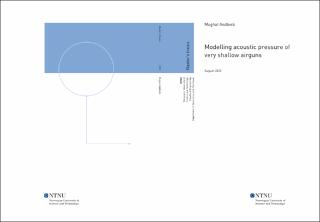Modelling acoustic pressure of very shallow airguns.
| dc.contributor.advisor | Arntsen, Børge | |
| dc.contributor.advisor | Landrø, Martin | |
| dc.contributor.author | Andleeb, Mughal | |
| dc.date.accessioned | 2023-01-31T18:20:43Z | |
| dc.date.available | 2023-01-31T18:20:43Z | |
| dc.date.issued | 2022 | |
| dc.identifier | no.ntnu:inspera:114863745:64697018 | |
| dc.identifier.uri | https://hdl.handle.net/11250/3047586 | |
| dc.description.abstract | ||
| dc.description.abstract | A surge of advancements in air-gun technologies propels geophysicists to ask the uncomfortable question. Is there an alternative to equipment-based low-frequency enhancement? Most marine seismic acquisition setups are inclined towards deep-towed air-gun placement to acquire a broadband pressure response. Such surveys combine multiple sources to reduce subsequent bubble oscillations after the first peak and the shot effect that directly reduces the frequency bandwidth of the signal. These methods modify the acquired signal into an ideal signature. This thesis aims to model the acoustic pressure response of sources placed very close to the free surface to understand the contribution of bubble energy toward low-frequency band enhancement. The modelled data is compared against the recorded data from a water tank experiment conducted for sources placed at 0.1 m and 0.15 m, and an offshore experiment at a source depth of 7.5 m below the free surface. The modelled pressure response matched well with the recorded data from the water tank experiments. The modelling approach accounts for the interaction of bubble and free surface by modifying parameters in the Rayleigh-Plesset equation such as dynamic viscosity of the medium and the polytropic constant. The modelling is performed in two stages; 1) The bubble radius is modelled until the equilibrium state after the critical radius is reached i.e when the bubble breaks the thin water layer and is contracting. 2) Initial velocity and radius are redefined for sources placed deeper than 0.1 m to model the bubble oscillations after bubble and free surface interaction. The displacement of the free surface is estimated from the modelled radius and compared against the expected value. The pressure response of the bubble is used to estimate the near-field and far-field signal at a receiver depth of 0.5 m and 20 m respectively. The frequency spectrum of the far-field pressure signal is normalised and compared against the spectrum of recorded pressure response at 7.5 m source depth to observe the relative change in the amplitude of the frequency spectrum. The comparison shows an increase in 7.6 dB in amplitude for frequencies between 0-12 Hz at 0.15 m source depth and an increase in 6.6 dB in amplitude for frequencies between 0-7 Hz at 0.1 m source depth. This increase in the low-frequency amplitude spectrum can aid in mitigating cycle skipping issues in Full Waveform Inversion. | |
| dc.language | eng | |
| dc.publisher | NTNU | |
| dc.title | Modelling acoustic pressure of very shallow airguns. | |
| dc.type | Master thesis |
